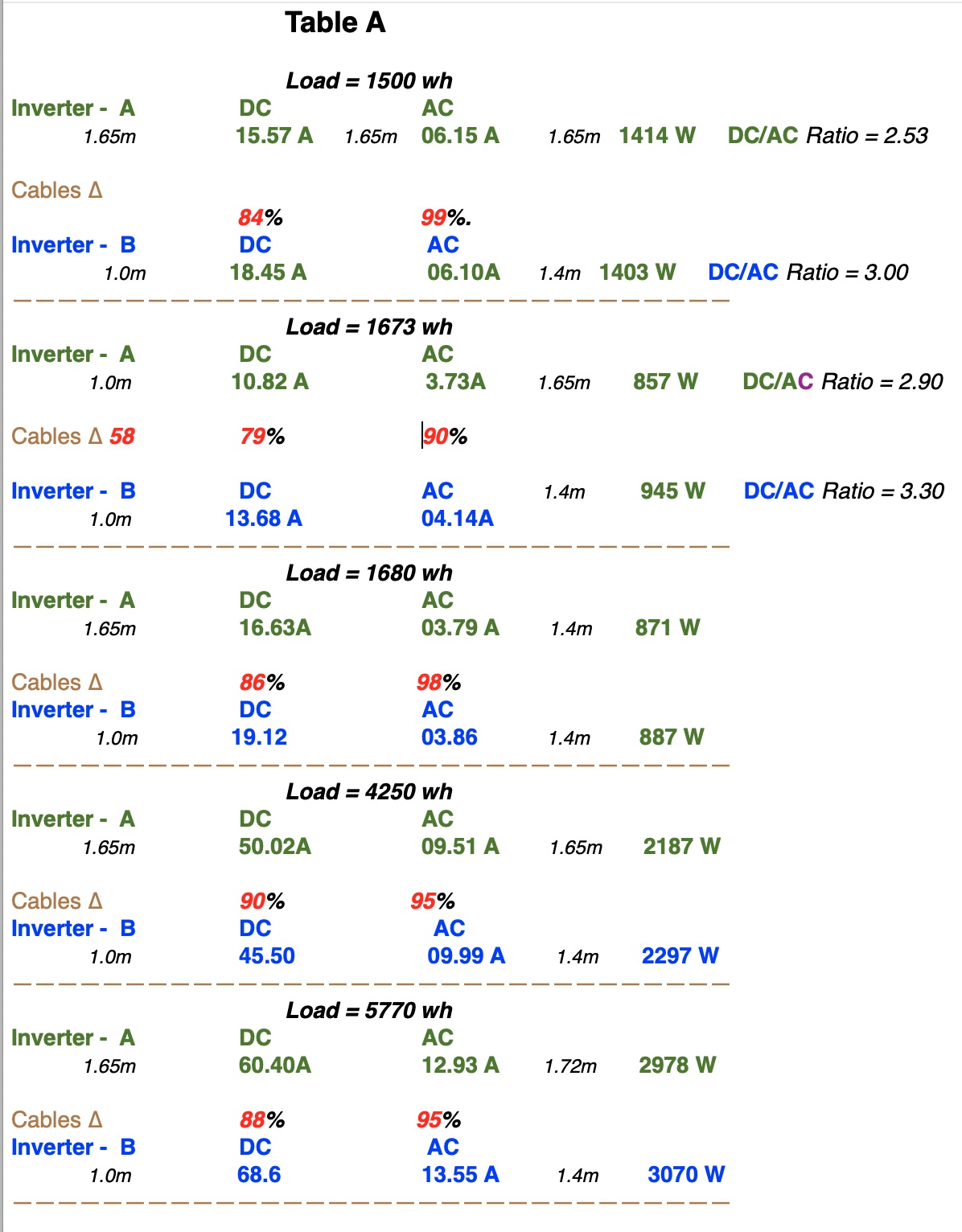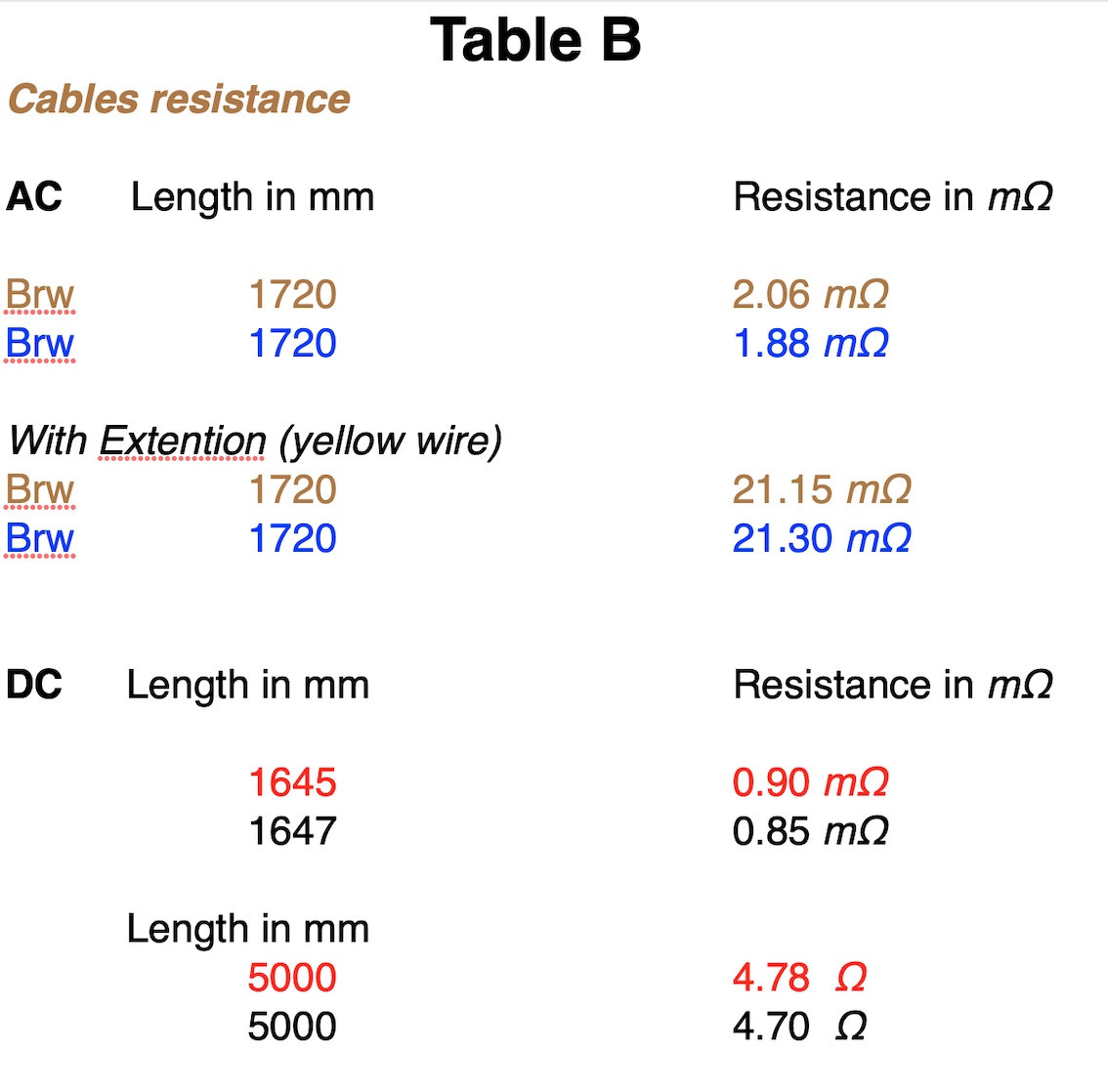I’ve read most of the posts on this topics but did not find the answer that I was looking for
It s almost invariably stated that all inverters in one system should have equal cable lengths.
I’ve also read exceptions like: “unless you have gone as big as the terminal can take”
Question:
In an off grid system I am adding a second Multiplus II 5000 in parallel only centimetres away from the closest one to the Distributor and lengthening the shorter DC cables enclosed in trunking (currently 1m), would make for a very messy arrangement.
Since I am using 2/0 Awg (70mm) cables for both, I am wondering exactly what impact would the extra 35cm DC cable on the second unit have on the system.
I would have thought that 70mm section was large enough not create a signifiant resistance delta.
If, again as stated in various discussion because of the Dc lengths difference the AC system would draw more from the closest inverter and I was to quantify this by testing the passing Amperage discovering that a minor differential did exist, where would the problem be?
The AC side is not a problem and I can easily match the lengths
Thanks



